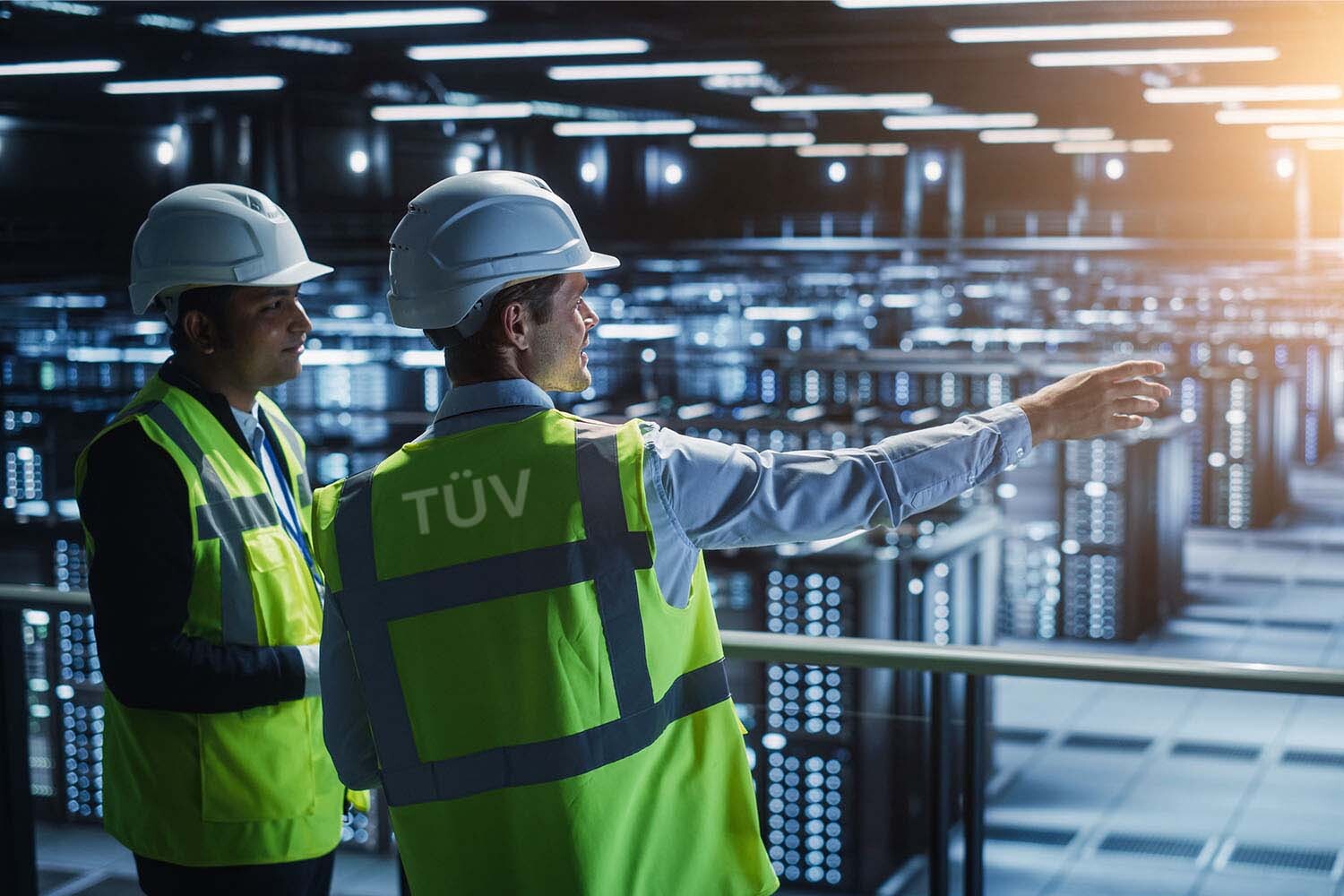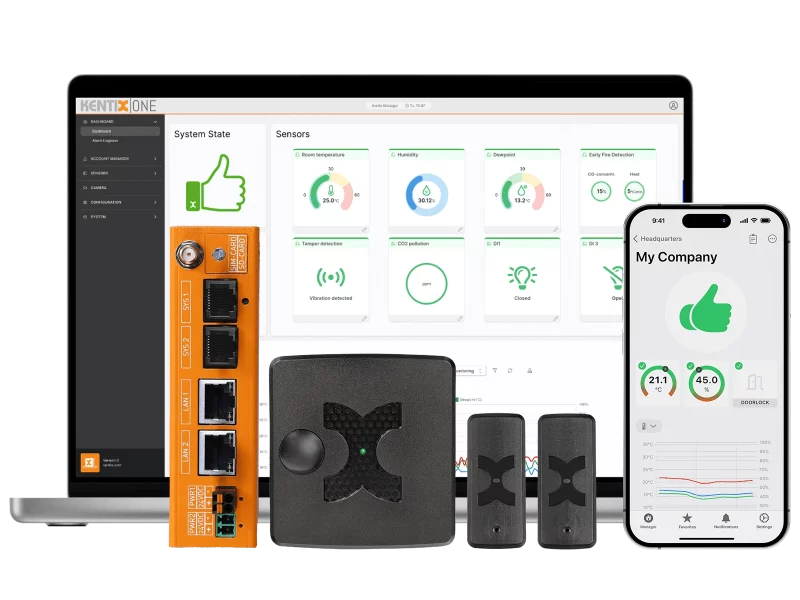A modern data centre must meet the requirements of cyber security in particular. However, a data centre must also be protected against threats in non-IT environments. However, the conventional analogue security technology that is often still used no longer meets the expectations of the younger generation of employees in particular. It also requires a great deal of planning and installation work. This is because there is a lack of integration of technologies and processes. Modern data centers therefore rely on innovative security solutions such as advanced access control systems, surveillance cameras, biometric identification systems and comprehensive security management. These enable effective monitoring, detection and defense against threats in real time.
Data center operators are also striving to optimize energy consumption and increase efficiency. Cooling generation, distribution and supply are crucial for sustainable operation. In view of rising operating costs and a shortage of skilled workers, modern solutions are needed to ensure safe and efficient operations even with a small workforce.
What do operators have to do to obtain TÜV certification for their data center?
Certification requires a holistic approach. Operators must not only use modern safety technology, but also optimize energy consumption and ensure efficient operating processes. Compliance with DIN EN 50600 requires a detailed risk analysis and classification into availability and protection classes.
The first step should always be the development of rough concepts. This allows initial statements to be made about the company risk even before the actual planning stage. The risks are manifold and include, among others:
- Data loss: severe financial penalties for loss of service
- Business interruption: Business-critical applications and services can no longer be provided
- Damage to reputation: Business reputation suffers
Evaluate threats to the data center with the risk matrix
A comprehensive risk analysis is essential in order to identify potential hazards. All risks are assessed in terms of their impact and probability of occurrence using a risk matrix. This assessment makes it possible to make decisions on how to deal with these risks. This means identifying suitable measures to reduce both the impact and the probability of occurrence.
The role of IoT-based physical security in the certification of data centers
The expectations of data center operators have changed in recent years. Analog or non-integrated systems are increasingly seen as an obstacle. The enormous additional workload for IT staff is a nuisance, especially for the younger generation. They can expect seamless integration and the option of remote control via apps. In addition to functionality and risk analysis, operators are also concerned with convenience, simplicity and efficiency when it comes to effectively securing a data center. This is where the innovative IoT-based physical security solution comes in.
The advantages of IoT technology in security technology are manifold. By networking security devices, information can be monitored, collected and analyzed in real time, enabling a rapid response to threats and unusual events. For example, surveillance cameras with IoT functionality can send images or videos to a central monitoring station that automatically detects suspicious activity and triggers alarms. The IoT also contributes to the automation of security processes, for example by automatically locking doors or switching off power sources in the event of potential security risks.
Simplify processes, increase security
The key features of IoT technology are automation, integration and centralization. This significantly simplifies the processes in a data center:
- Automation: With the help of IoT, user management systems such as Active Directory or Azure AD can be seamlessly integrated into physical security. This means that access to the data center is strictly controlled and only granted to authorized persons.
- Integration: The IoT platform can be fully integrated into the existing IT infrastructure without the need for additional servers or cabling. This significantly reduces costs and implementation effort.
- Centralization: By using IoT-based solutions, all security systems can be managed via a central IoT platform. This gives operators easy access to all relevant information and data that is important for the security of the data center. Management can be carried out via a user-friendly web front end and apps, so that all information can be accessed at any time and from anywhere.
In combination with the physical protection of server and technology rooms, e.g. through special IT security room systems, IoT technology leads to more efficient security monitoring and improved protection of sensitive data and systems. From strict access control to comprehensive management via user-friendly platforms and apps: the use of IoT-based physical security systems increases security, reduces effort and lowers costs at the same time.
Kentix offers just such a physical security solution. The principle: everything fits together, everything is compatible – like a modular system that can be individually assembled and expanded at any time.
Cooperation between Kentix and DeRZ: Paving the way for TÜV certification of data centers
The partnership between Kentix and DeRZ Deutsche Rechenzentren GmbH sets new standards. By combining Kentix’s modern IoT security solutions with DeRZ’s holistic planning, data center operators benefit from more efficient security monitoring and improved protection of sensitive data and systems.
EN 50600 is exceeded
The decisive advantage, however, lies in the (over)fulfillment of DIN EN 50600 and thus the possibility of TÜV certification of the data center. Kentix and DeRZ Deutsche Rechenzentrum GmbH are offering a cooperation in this area: A data center planned and built by DeRZ Deutsche Rechenzentrum GmbH that is equipped with IoT-based physical security technology from Kentix can be certified by TÜV Saarland in accordance with DIN EN 50600. This represents a considerable simplification of the entire process.

